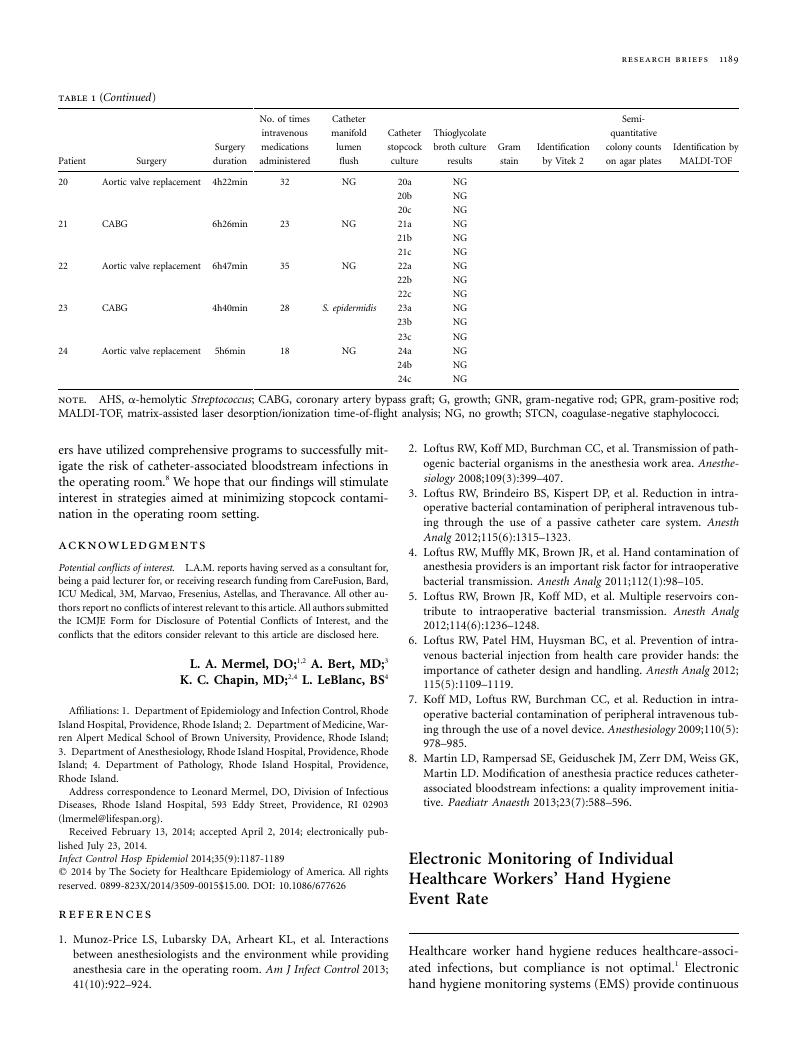Crossref Citations
This article has been cited by the following publications. This list is generated based on data provided by Crossref.
Boyce, John M.
2017.
Electronic monitoring in combination with direct observation as a means to significantly improve hand hygiene compliance.
American Journal of Infection Control,
Vol. 45,
Issue. 5,
p.
528.
Boyce, John M.
Polgreen, Philip M.
Monsalve, Mauricio
Macinga, David R.
and
Arbogast, James W.
2017.
Frequency of Use of Alcohol-Based Hand Rubs by Nurses: A Systematic Review.
Infection Control & Hospital Epidemiology,
Vol. 38,
Issue. 2,
p.
189.
McLaws, Mary-Louise
and
Kwok, Yen Lee Angela
2018.
Hand hygiene compliance rates: Fact or fiction?.
American Journal of Infection Control,
Vol. 46,
Issue. 8,
p.
876.
Boyce, John M.
2019.
Current issues in hand hygiene.
American Journal of Infection Control,
Vol. 47,
Issue. ,
p.
A46.
Boyce, John M.
Cooper, Timothea
Yin, Jun
Li, Fang-Yong
and
Arbogast, James W.
2019.
Challenges encountered and lessons learned during a trial of an electronic hand hygiene monitoring system.
American Journal of Infection Control,
Vol. 47,
Issue. 12,
p.
1443.
Eng, Tony Y
Eng, Nina L
Jenkins, Carol A
and
Grota, Patti G
2021.
“Did you wash your hands?”: a prospective study of patient empowerment to prompt hand washing by healthcare providers.
Journal of Infection Prevention,
Vol. 22,
Issue. 5,
p.
195.
Clancy, C.
Delungahawatta, T.
and
Dunne, C.P.
2021.
Hand-hygiene-related clinical trials reported between 2014 and 2020: a comprehensive systematic review.
Journal of Hospital Infection,
Vol. 111,
Issue. ,
p.
6.





